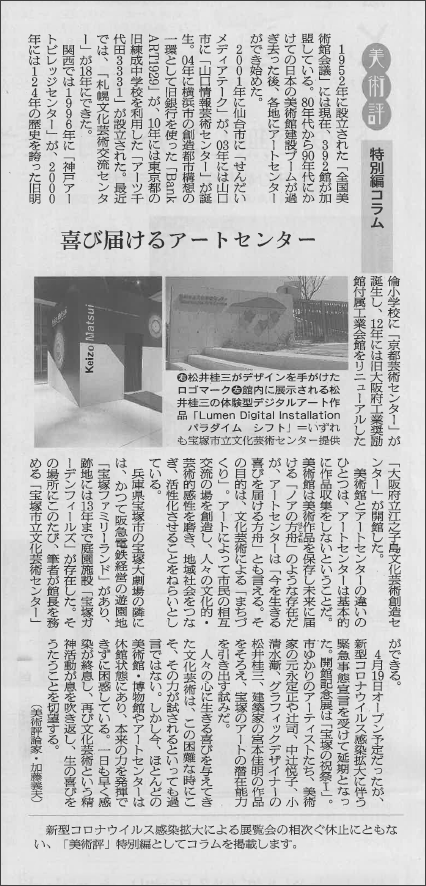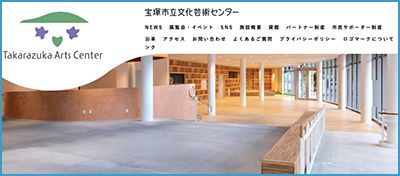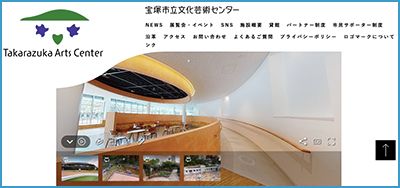Information on remote research cafe by Zoom
he Japan Design Management Association (JDMA) will hold a remote research cafe by Zoom. The Research Cafe is a central activity of our association on a daily basis. We will provide topics and discuss in a cafe style about important related matters and themes that members are interested in.
"Art Project" & "Area Study" Discovery and Creation of Local Resources through Fieldwork "Katsuhito Nakazato Guest Speaker: Professor, Department of Photography, Tokyo Zokei University
"Art Project", which has been practiced in various parts of Japan since 2000, and "Area Study", a class that has been undertaken since 2011 in the Department of Photography, Tokyo Zokei University. In both cases, mainly fieldwork, alternative location is regarded as a frontier, and photo exhibitions, installations, workshops, etc. are held in the local community to study the creativity and sociality of design and art in the local community. , I have announced. Following in the footsteps, we will report on various activities in design and art.
https://youtu.be/phuyY78__AM
"Possibilities of design-past and future (keywords of this time)"Mr. Kimitaka Kato (Adviser / JDMA Special Member: Japan Institute of Design Promotion, Managing Director)
Let's take a look at the current and future "design" by organizing the flow of "design" evolving with the times from the on-site experience of design that has been experienced in companies for more than 40 years. At that time, "design" is analyzed in line with each time axis of "value, technology, physicality, and society", and as a result, "design" fulfills the changes in social values and the evolution of technology. Let's take a bird's-eye view of the roles and achievements that have been achieved, and take a bird's-eye view of the direction of "design" that is expected in the future. In addition, I would like to discuss with you the keywords that interest me at this time.
https://youtu.be/tXWlTSIwXeI
Creating new value that causes innovation is "logical thinking x design thinking" Toru Kimura, Chief Design Officer, Kimura Design Institute Co., Ltd.
2020 From the 1970s to the present day, tracing the transition of automobile design in the background of the times, what we think and how we should respond to the once-in-a-century revolution, "logical thinking x design thinking" Through the hybrid process of, I will explain based on actual examples.
https://youtu.be/RRTQbLh54K0
https://youtu.be/Hcvx2SN2QgI
Possibility of Creativity Education Activities-Design Session Tama 2020 Participation in the Workshop "Mountains and Towns Connected by Trees" -Mr. Shinji Takashima (JDMA Special Member)
I would like to share the information and proposals of the workshop I participated in in March this year with you and exchange opinions on the possibilities of future creativity education activities.
https://youtu.be/iqvH91q0CSI
https://youtu.be/L1YiQBSu2LU
JDMA Research Cafe Life Design Inomata and Hoshino
Design for disability resolution
"Phantom limb pain" is a mysterious phenomenon in which the limbs that should have been lost after amputation of the limbs are felt to exist (phantom limbs), and the phantom limbs are severely hurt. Phantom limbs and phantom limb pain can occur not only after amputation of the limbs, but also when the limbs are paralyzed in sensation and movement due to nerve damage or spinal cord injury.
Inomata experienced a serious injury in a motorcycle accident at the age of 17. His right arm surgery was successful, but he subsequently suffered from phantom limb pain that hurts his supposedly numb arm. Currently, I am working on research on devices that use VR technology to relieve the pain.
We face various difficulties in our lives, but this time we would like to ask Mr. Inomata to talk about how design can contribute to pain.
September 26, 15: 00-16: 30 Social Design Director Yoshio Kato
Yoshio Katoh (art critic, director of Takarazuka City Cultural Arts Center, visiting professor of Osaka University of Arts), a director of this association, conducted research and practice on creating a city through cultural arts and creating a place for mutual exchange between citizens through art. I am. While introducing hot examples at the research cafe, we will provide an interesting perspective on how cultural arts are linked to urban development and how art intervenes in the creation of a place for citizens to interact with each other. We will continue to interact.
* Research Cafe Zoom URL will be posted later.
* If you wish to participate in the Research Cafe, please register for participation using the participation application form. (The participation application form will be posted later)
Related information
The opening of the Takarazuka City Cultural Arts Center was on April 19th (Sun), but it was postponed due to the new size of the roller. At the same time, "Opening Memorial Exhibition: Takarazuka Festival 1" has also been postponed. Yoshio Kato (JDMA director), director of the Takarazuka City Cultural Arts Center and art critic, wrote the article "Art Center for Delivering Joy" in the Asahi Shimbun Osaka Headquarters Edition.

Asahi Shimbun 2020.04.21
(Art review) Special edition column Art center that delivers joy
"Reprinting without permission from Asahi Shimbun is prohibited."
"Acceptance number 20-1610"
The Takarazuka City Cultural Arts Center, an art center that was born on the site of the Takarazuka Family Land Mark, has been postponed to its grand opening on April 19 (Sun) due to the announcement of an emergency declaration due to the spread of the new coronavirus infection. It has become undecided.
Therefore, for customers who cannot visit the museum, the online opening of the center and exhibitions using 3D views and VR images will be open on the official website from 10:00 on May 1st (Friday).
https://takarazuka-arts-center.jp/

Five Phases of Design Management
The Japan Design Management Association is thinking about the future of design management and its activities in five phases. It is 1. Social design 2. Regional design 3. Life design 4. Corporate design 5. There are five phases of creativity education. Until now, design management has developed and developed the theory and practice of design in the cycle of management, technology, production, distribution, consumption and life culture from the viewpoint of "corporate design". This axis will not change in the future, but today, the roles, practices and research required for design are social (Society), regional (Region), life (Life), and management (Corporation). , Directed to the creative side (Creation). At the same time, these things are also required for corporate activities, research and development, and education. In addition, SDGs "Sustainable Development Goals" are also required to be put into practice in society, regions, companies, and education as a realistic issue. The Japan Design Management Association (JDMA) will develop comprehensive activities through social cooperation and international cooperation, based on practice and research on these issues.
* The SDGs were adopted at the United Nations Summit in September 2015, and are the 17 goals set by 193 UN member states to achieve in the 15 years from 2016 to 2030.
Social design
 Social design can be thought of as an activity that envisions how to create shared value in society and specifically links it to the activities of local communities, communities, companies, and individuals. The spread and significance of these activities is great, and there is an increasing demand for integration functions by design (functions that connect fields and different industries by design) and information dissemination.
Social design can be thought of as an activity that envisions how to create shared value in society and specifically links it to the activities of local communities, communities, companies, and individuals. The spread and significance of these activities is great, and there is an increasing demand for integration functions by design (functions that connect fields and different industries by design) and information dissemination.
Regional Design
 How to revitalize the region and community is a major issue for Japan. Regions and communities have their own history, their lands, and their unique values and cultures rooted in people. Inheriting and developing these is an important point of view for regional and community revitalization.
How to revitalize the region and community is a major issue for Japan. Regions and communities have their own history, their lands, and their unique values and cultures rooted in people. Inheriting and developing these is an important point of view for regional and community revitalization.
Life design
"Life design" is an activity to make a life plan in order to live a worthwhile life. Today, which is said to be the age of 100 years of life, thinking about the outlook on life and lifestyle only from the perspective of working age is no longer suitable for the coming era. Major trends in Japanese society: The digital revolution, super-aging, declining birthrate, etc. will continue to progress in the future. In such an uncertain and uncertain era, a design-oriented life plan that "draws dreams, makes hypotheses, repeats trials and errors, and walks your own life" will make your future your future. It will open abundantly.
Corporate Design
Business management and design are becoming more and more relevant today. In addition, we are strengthening our design commitment not only in corporate organizations but also in various organizational management (administrative agencies, third sector, social welfare corporations, etc.). In addition, how to connect new design fields such as service design and UX design (User Experience Dsign: design that enhances experience value) to corporate management and R & D is also important as the role of design management.
Education of Creativity
Education has been institutionalized from the perspective of social, industrial and lifestyle development, forming today's educational environment. Nowadays, "creativity = originality and usefulness" plays a very important role not only in the fields of art and design, but also in management, technology, production, distribution, consumption, society and life culture. JDMA is engaged in activities to activate creativity in order to create essential social value, and we believe that promotion of creativity education is indispensable for thinking about the future of Japan. And, in order to foster the next generation of "creators," we are advancing efforts that go beyond the conventional framework of education.

 詳しくはこちら
詳しくはこちら 詳しくはこちら
詳しくはこちら 詳しくはこちら
詳しくはこちら






